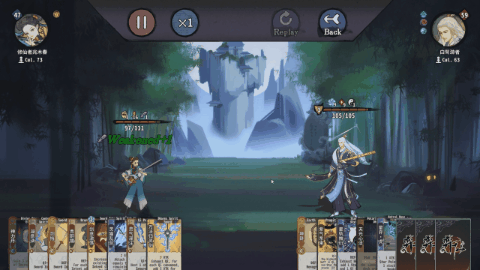This Chinese Indie Game Became One of The Most Popular Deck Building Games on Steam
1K View2022-12-29
Yi Xian: The Cultivation Card Game started early access on December 7th, and the average daily active users have remained around 8,000, which is decent for an indie game. For example, TGA’s best mobile game award-winner, Marvel Snap, has a similar number of active users on the PC platform. Meanwhile, the most popular deck game on Steam is Yu-Gi-Oh! Master Duel, whose maximum active user number is 30K per day.
Most of the players are from China. It is possible that many players are post-Hearthstone players considering the fact Hearthstone will cease operation in China soon. But given that Yi Xian: The Cultivation Card Game is a paid game priced at 7.99 USD instead of F2P, the showing so far is still quite remarkable.
The main PVP mode of Yi Xian: The Cultivation Card Game is similar to the Battleground mode in Hearthstone, where eight players face off in 1v1 rounds, with the goal to be the last player standing. The combat is more like Slay the Spire + Autochess; the players will draw cards and build their deck to fight with opponents. The unused cards can be exchanged for other cards or consumed for “cultivation”, a value that determines the player character’s initiative and the depth of the exchange deck.
Before a match, players will choose their characters from three different schools or “Sects”. Each Sect has its own card deck, and each character has unique traits which will determine the deck-building direction for the players before starting the match.

A gif of one of the game characters
During the fight in each match, the two sides will automatically play the deck in turn, strictly based on the card sequence built by the respective players, until one side’s HP drops below 0. We can see that the battle results of Yi Xian: The Cultivation Card Game are heavily predictable and calculable. Players must build an efficient loop for their decks and improve it after each battle.

A gif of the game card exchange feature.
Thankfully, Yi Xian: The Cultivation Card Game is a deck game with “small numbers”, like Slay the Spire. Most cards only contain values below 10. Simple addition and subtraction can cover most of the calculations. Even in the later stage of the match, where everyone has the “perfect” deck, the numbers stay manageable.

A gif of the game’s later stages of combat.
On the other hand, considering the game has hundreds of cards, and some of them have complicated mechanics, it is still quite challenging and fun to create an optimal build over time. New players are often advised to take a pen and paper with them by experienced players.
The game is heavily inspired by cultivation novels, which are popular in China. Making it easy for many Chinese players to accept the features of the game, like “sword intent”, ”five elements”, “formation”, or “hexagram”. It is another story for the English version. Even for players who are familiar enough with “Wuxiaish” themes, the language used in Yi Xian: The Cultivation Card Game is a bit confusing.

A Screenshot of Yi Xian: The Cultivation Card Game’s review.
For example, Chinese players have little trouble with the “Ultimate World Formation”(混元无极阵). They can easily understand that the more “Five Elements” cards they have, the stronger the card will be from the name and the art design of the card. But the non-Chinese speaking players must read the entire English description of the card, which is longer and more confusing. Some players have even been asking for explanations of card effects on the official Discord channel.

The comparison between the Chinese and English versions of “Ultimate World Formation”
Though some players have complained about the pricing strategy of the game: it is a paid game and comes with microtransactions. Others explained that they could unlock everything in the game without spending money on microtransactions and that the game’s content is fully worth the price.
For a PVP-focused deck-building game, the lifespan of the game is heavily determined by the long-term operation abilities of the game provider. The team may need microtransactions to cover the operating costs of the game. The developer of “Night of Full Moon”, another Chinese deck-building indie game, announced in November 2022 that due to a financial crisis, they would be doubling the price of the game’s DLC. It came as a surprise to many who thought it was a popular deck-building game.
Meanwhile, the game developers of Yi Xian: The Cultivation Card Game are working hard on updates after release. Additions made since launch include balance adjustments, new cards, a free character trial, and a full single-player mode. On top of that, there are new PVP modes, one new character, and a holiday event on the way.

The roadmap through the end of January 2023, shared by the game developer on social media
Source: YYS
TapTap looks better
on the app






